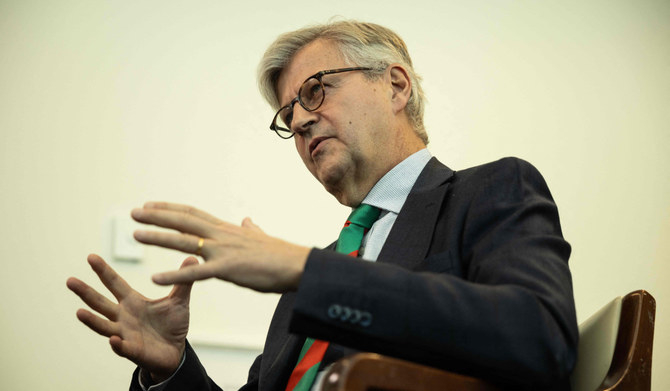
- ARAB NEWS
- 02 Jul 2025

BEIRUT: The UN’s peacekeeping chief has called for an end to the violence between Hezbollah and Israel following a four-day visit to Lebanon.
Jean-Pierre Lacroix, the UN’s under-secretary-general for peace operations, warned in a concluding statement: “Each day violence continues along the Blue Line increases the risk of a larger and more devastating conflict.”
He warned that UNIFIL forces, which oversee peacekeeping operations in southern Lebanon, had suffered casualties as a result of the border hostilities.
Lacroix added: “Since the exchanges of fire began, dozens of civilians and journalists have been injured or killed. UNIFIL positions have been hit more than 20 times, with three peacekeepers injured. This is not acceptable and must end.”
“Parties and actors involved in the exchanges of fire must avoid harm to civilians and maintain the inviolability of UN personnel and premises.”
He commended the perseverance of the more than 10,000 UNIFIL peacekeepers operating in the south.
UNIFIL is continuing to implement its mandate “despite the unprecedented challenges since 2006,” Lacroix said.
He added: “The mission and its peacekeepers remain steadfast in their continued support for a long-term solution to the conflict.”
Lacroix’s trip to Lebanon took place amid surging tensions along the Blue Line between Lebanon and Israel.
The UN official met major Lebanese political and military figures, urging a commitment to a durable political and diplomatic solution.
He met Parliament Speaker Nabih Berri, caretaker Prime Minister Najib Mikati, Foreign Minister Abdallah Bou Habib, Defense Minister Maurice Sleem, army chief Gen. Joseph Aoun and General Security chief Maj. Gen. Elias Al-Baysari.
Lacroix also met ambassadors from countries deploying troops to UNIFIL, ambassadors of the permanent members of the UN Security Council and other members of the diplomatic community in Lebanon.
His main message in those meetings was “the need to calm regional tensions that could have potential implications for peace and stability in Lebanon,” a statement said.
After the trip, Lacroix said: “We are deeply concerned about the acts of violence across the Blue Line and the rhetoric that we witnessed since Oct. 8, which indicates the possibility of a broader escalation that should be avoided at all costs.”
Lebanese media reported a cooling of tensions on the southern front over the past two days, with a fall in casualty numbers.
After meeting Lebanese officials on Thursday, US energy envoy Amos Hochstein called for “cooling down the front, in light of the difficulty of a current ceasefire before ending the war on Gaza.”
Hochstein also visited Israel during his tour, aiming to reduce tensions on the northern border and limit confrontations to 8 km on either side, to avoid civilian casualties.
Hezbollah conducted five operations on Friday and declared it had carried out four more operations by Saturday afternoon.
The group targeted the Israeli Al-Assi military site, the Birkat Risha site, the Pranit barracks and its garrison, and the Miskav Am site.
Israeli artillery bombardment was restricted to Lebanese villages near the front, including the outskirts of Khiam, Kafr Kila, Aita Al-Shaab and Hula, within 7 km of the border.
The Israeli military also continued its use of prohibited phosphorus bombs to strike the Khiam Plain and the town of Kafr Kila.
Its airstrikes targeted the outskirts of border towns, particularly Mays Al-Jabal, which was hit more than four times.
Yaroun, Marwahin, Yarin, Tayr Harfa and the surrounding areas of Naqoura were also targeted.
Israeli reconnaissance aircraft continued to fly in the southern airspace, up to the outskirts of the Litani River.